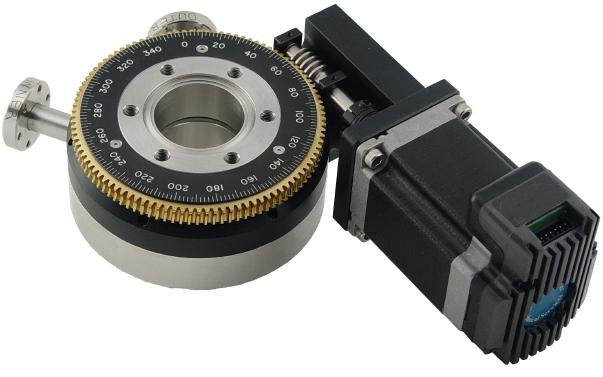On DPRF platforms, the ratio between the driving shaft (worm) and the rotating flange (worm gear) is 100:1 or greater. This means that for each revolution of the worm, the flange rotates 3.6 degrees or less.

Unlike DC or AC motors which run continuously, stepper motors take a discrete number of steps to complete a revolution. These steps are sufficiently small that it often looks like continuous motion to the observer. Software commands issued to a stepper motor cause the motor to move a specified number of steps which is the basis of the motion control.
When both stepper motor and controller are supplied on a system, the motors have a minimum step resolution of 400 steps per revolution up to a maximum of over 50,000 steps. (This value can be changed in the software.) So on our DPRF-series, at 400 steps per revolution the resolution per step is 3.6 deg / 400 = .009 degrees. At 4000 steps per revolution, the step resolution would be 0.0009 degrees. This latter value is perhaps beyond the precision of the (commercial) worm gear.
Depending on specific motor configuration and several other variables, there is a finite range of possible step speed (steps per unit time) which, in turn, limits the maximum motor speed.
For example, using the step resolution values above, with the controller issuing 2000 steps per second, a motor set for 400 steps per revolution would turn 5 revolutions per second whereas a motor set for 4000 steps per revolution would turn 0.5 revolutions per second. Generally speaking, stepper motors have more torque at the lower end of their speed range and less at the high end. For this reason, selection of motor step resolution, step speed, working load and required drive speed should all be considered when designing a motor system.
For applications like a rotary platform where the mechanical speed reduction is large and the maximum rotation is slow, motor selection is not so critical.